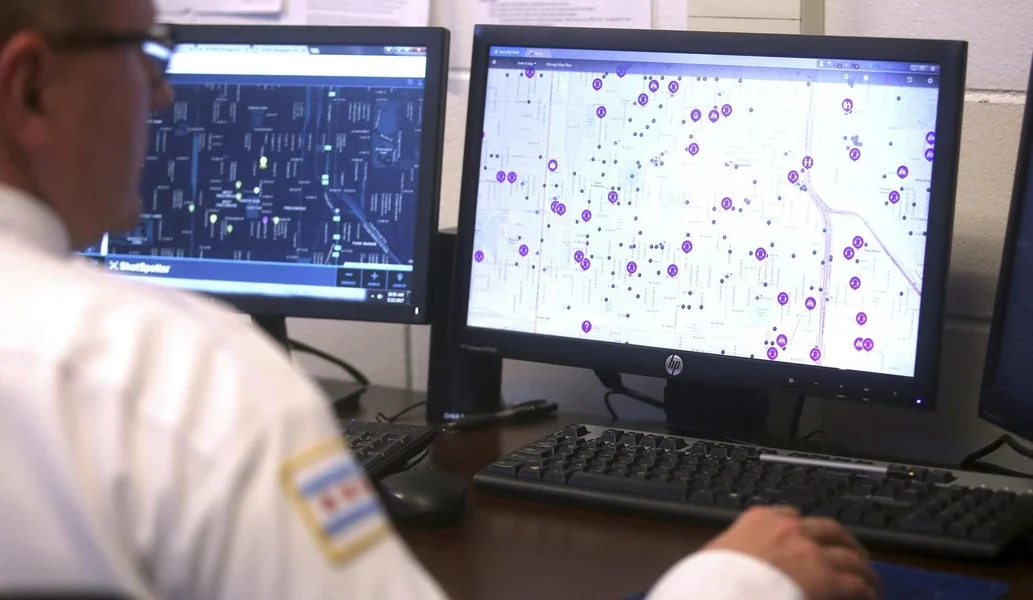Law Enforcement Increasingly Enlists Artificial Intelligence to Fight Crime
As the field of law enforcement continues to evolve, one of the most significant advancements in recent years has been the integration of Artificial Intelligence (AI) into police operations. While it may not yet resemble the precrime scenarios depicted in Science fiction, the use of AI tools and machine learning has become integral to the work of police forces nationwide.
The Role of AI in Policing
More than half of police agencies are now utilizing AI and machine learning for data analysis, and this trend is expected to grow. AI has proven to be a natural fit in law enforcement, facilitating crime forecasting and intelligence-led policing. As a result, there’s a potential shift towards the prevention of criminal conduct through the use of AI in various types of crime.
AI Utilization in Policing Operations
AI-powered technology in police operations includes the use of cameras that can read license plates and cross-check data to identify stolen Vehicles or individuals with outstanding warrants. Furthermore, AI can analyze extensive amounts of body cam footage to detect relevant moments and identify patterns that might otherwise be overlooked in police encounters.
Future Integration of AI in Law Enforcement
facial recognition software is on the horizon, offering officers another tool for identifying suspects and potential threats within the community. The integration of AI capabilities was demonstrated during the events at the Capitol in 2021, where the FBI utilized AI to process large volumes of multimedia data, aiding in the identification and tracking of individuals involved in the incident.
Concerns and Ethical Implications
However, the adoption of AI in policing also raises concerns about privacy and civil liberties. The potential for invasive law enforcement practices, especially when augmented with sophisticated AI technology, has led to apprehension among civil liberties advocates. The Electronic Frontier Foundation emphasizes the necessity of understanding and addressing the potential threats posed by emerging technologies to safeguard civil liberties and rights in the digital era.
AI Tools for Crime Prediction and Prevention
While the use of AI in apprehending suspects generates controversy, AI scientists are actively developing tools for predicting and averting potential criminal events. For instance, the deployment of AI technology such as ZeroEyes, designed to detect individuals carrying firearms, offers a preventive approach. This technology, integrated into surveillance systems, scans for firearms and alerts human operators upon detection.
AI in Detecting Gunfire and Crime Scenes
Another example of AI integration in law enforcement is the implementation of ShotSpotter, a system that allows precise detection of gunfire locations, aiding law enforcement in responding swiftly to crime scenes. While this technology has shown success in detecting and analyzing gunshots and aiding in arrests, its utilization has sparked debate and controversy in some communities.
Public Response to AI Integration in Policing
In cities such as Durham, North Carolina, and Chicago, there has been a significant backlash against the deployment of ShotSpotter technology. Civil rights advocates and community members have voiced concerns, citing instances where the technology led to undue police Action or questionable outcomes. The public’s pushback against the use of AI in law enforcement underscores the need for ethical and transparent practices in the integration of technology with policing.
The Way Forward: Balancing Innovation and regulation
As law enforcement continues to embrace AI and machine learning tools, it becomes imperative to strike a balance between technological Innovation and regulatory oversight. Policymakers and law enforcement agencies must consider the ethical and legal implications of AI integration in policing, ensuring that civil liberties and rights are upheld while leveraging the potential benefits of advanced technologies in crime prevention and law enforcement operations.
Conclusion
The integration of Artificial Intelligence into law enforcement operations represents a transformative shift in policing practices. While AI offers the potential for enhanced crime prediction and prevention, concerns regarding privacy, civil liberties, and the ethical use of technology must be carefully addressed. Striking a balance between Innovation and regulation is essential for harnessing the benefits of AI while safeguarding fundamental rights in the digital age.
Source: washingtontimes








No Comments